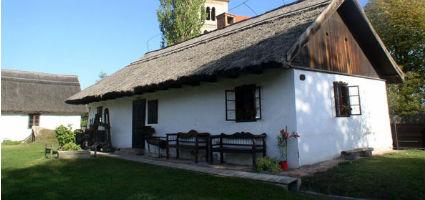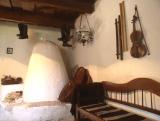2024. April 25. Thursday
Ócsa County House - Ócsa
 |
Address: 2364, Ócsa Dr. Békési Panyik Andor u. 4-6.
E-mail: info@ocsa.tajhaz.hu
Opening hours: 01.02-30.09.: Tue-Fri 9-16, Sat-Sun 9-18
Winter Time Mon-Sun 9-16 |
The oldest part of Ócsa is the 'Old Village'. It is a real ethnographic curiosity with the Roman basilica built in the 13th century in the middle of the village. In 1975, the village part with 62 houses was declared protected since the structure of this part of the village is hundreds of years old. The small yard around the church hosts peasant houses of which he oldest was built towards the middle of the 18th century. The barns were not located in the yards of the houses but in the garden, just as the varied grinds. Since men often stayed in the barn for the night, it is also called the 'staying garden'.
Due to the protection, there are six houses in the village that kept Hungarian architectural characteristics.
Our ethnographic collection is located in the house right next to the church. This building was bought to host offices, but it soon turned out that the building is full of cultural values. There are people in the village who were born in the 1920-30's who often dress in traditional folk cloths. Barrels are filled every year in the past 300 years. Tools and equipment of vine production were kept by the villagers, many of them still use them.
The leader understood that it was necessary to collect and keep everything for posterity. Collecting began. The villagers gave 80-90% of all the material with love and the wish to help. In 1980 we received the leave to open the County House in Ócsa.
By now, the name County House is used for the group of five buildings. All estates, except for one, can be walked through. We placed benches in the yards so that everyone can have a rest in this peaceful environment.
However, all the buildings have their own names. The ethnographic collection is located in the County House and the barns. The Warming up place is in the neighbouring land. We utilize this building. The visitors can fins an oven and a beehive oven in operation in it.
There is no trespassing to the so-called Branch House. The visitors can enter there from the street. This house was named after the tree that holds the ridge pole.
These three buildings are specially protected.
The next house that joined the group was the office of the Danube-Ipoly National Park Management. In one of the rooms, an artisan workshop operates.
The Turján House was opened in 2002. It is a house to hold courses while those who wish to remember the past of relax can do so in the yard.
Due to the protection, there are six houses in the village that kept Hungarian architectural characteristics.
Our ethnographic collection is located in the house right next to the church. This building was bought to host offices, but it soon turned out that the building is full of cultural values. There are people in the village who were born in the 1920-30's who often dress in traditional folk cloths. Barrels are filled every year in the past 300 years. Tools and equipment of vine production were kept by the villagers, many of them still use them.
The leader understood that it was necessary to collect and keep everything for posterity. Collecting began. The villagers gave 80-90% of all the material with love and the wish to help. In 1980 we received the leave to open the County House in Ócsa.
By now, the name County House is used for the group of five buildings. All estates, except for one, can be walked through. We placed benches in the yards so that everyone can have a rest in this peaceful environment.
However, all the buildings have their own names. The ethnographic collection is located in the County House and the barns. The Warming up place is in the neighbouring land. We utilize this building. The visitors can fins an oven and a beehive oven in operation in it.
There is no trespassing to the so-called Branch House. The visitors can enter there from the street. This house was named after the tree that holds the ridge pole.
These three buildings are specially protected.
The next house that joined the group was the office of the Danube-Ipoly National Park Management. In one of the rooms, an artisan workshop operates.
The Turján House was opened in 2002. It is a house to hold courses while those who wish to remember the past of relax can do so in the yard.
